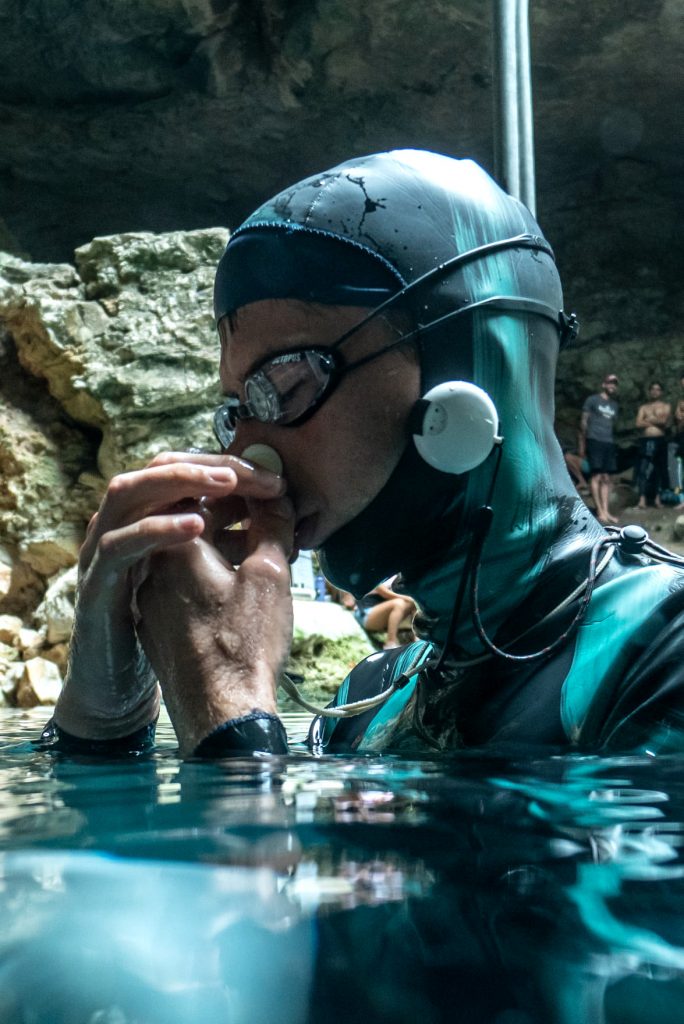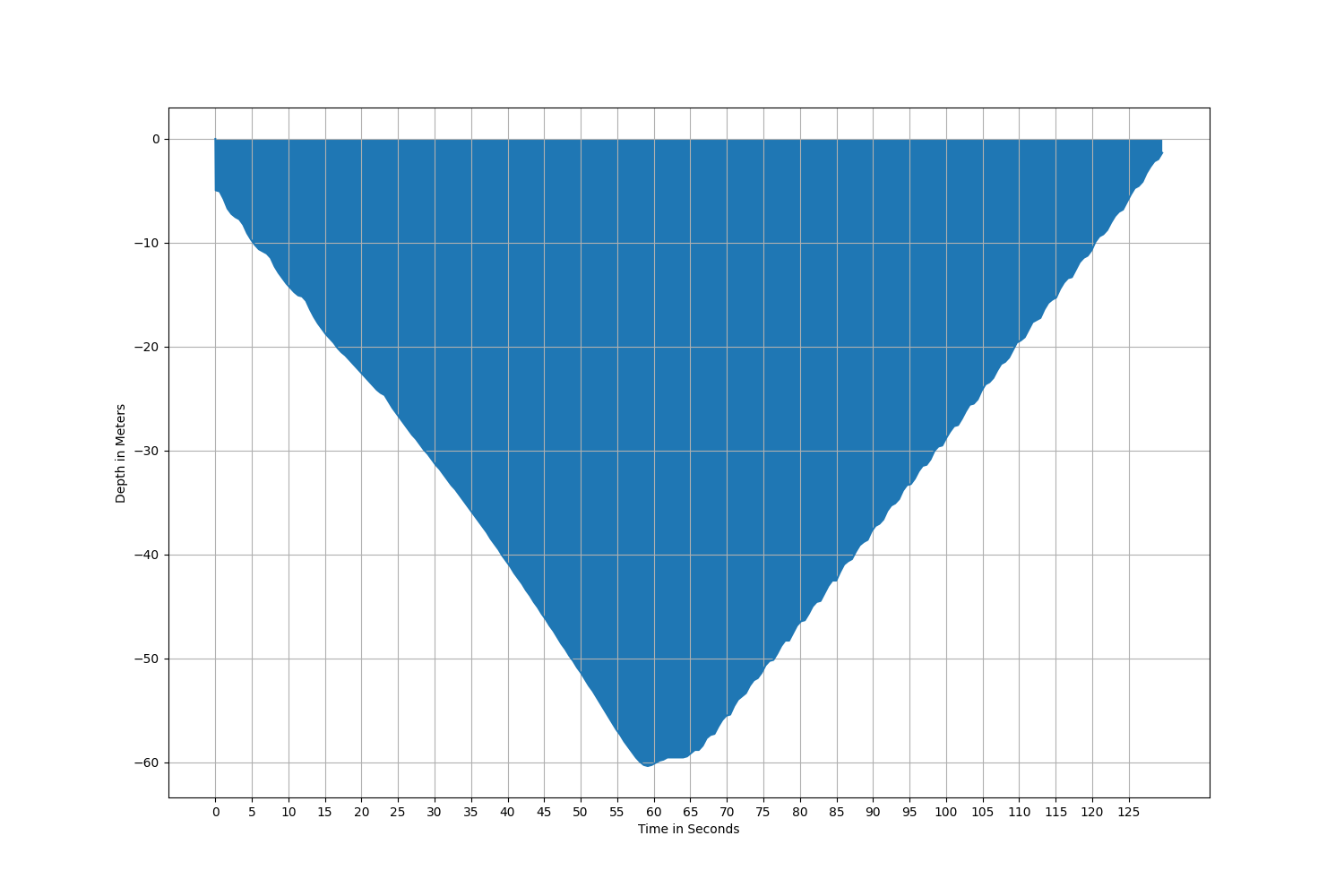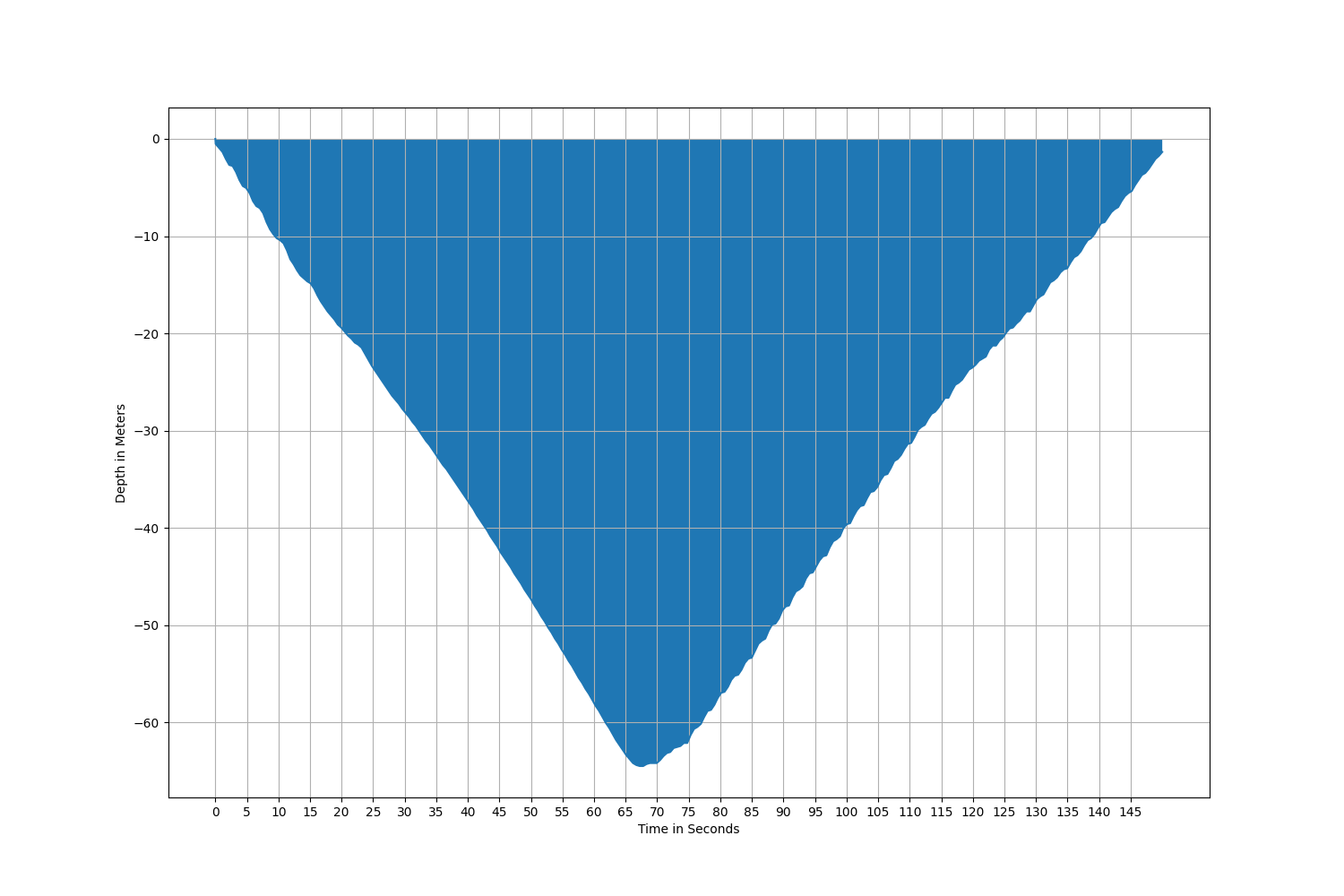Recently my freediving buddy Luke had used freediving smartwatch DiveBud at freediving competitions in Mexico. He did very impressive constant weight dives and we can share his two most impressive dives here today. We will analyse a freediving performance based on readings of the freediving smartwatch recorded and compare it to some references.

His first dive which we downloaded from his freediving smartwatch had 60 meters maximum depth and lasted just over the two minutes time:

Notice how the graph of the dive is sensitive to body movements of the freediver and we actually can calculate how many strokes Luke did on the way up and down. Clearly Luke did 5-6 strokes on the way down, which is considered to be a very good number.
The less effort a freedivers spend on the way down the more relaxed they are, so 6-7 strokes is considered to be a good number of strokes on the descending in constant weight with no fins (CNF). By the time of first minute Luke reached depth of 56 meters. And on the way up it was about 30 strokes. Timings of the strokes are very consistent, which indicates that a diver had a good form and was relaxed on the ascending.
Let’s look at the second and the deepest of Luke’s dives where freediving smartwatch DiveBud recorded 64 meters depth.
Try to guess how many more strokes my buddy had to do extra to get to +4 meters depth?

Here we see same 6 strokes on descending and by the first minute he reached depth of 57 meters, a very consistent descending performance between two dives. On the way up though Luke did about 36 strokes and there is noticeable difference between first a few strokes and the rest of the dive. So 6 strokes seems like a lot to overcome 4 extra meters of the dive and it is clear that Luke can improve this performance.
Let’s compare this dive for example with Dean Chaouche’s CNF dive to 82 meters with time 3 minutes 12 seconds(national record of Great Britain). We counted his strokes during the video and found that he did 7 strokes on the way down and 28 strokes on the way up, so clearly it was more efficient dive.
World freediving champion William Trubridge said: “I am definately an advocate of counting strokes and using alarms, they are realy important tools. You can listen to your alarms subconciosly…” when spoke in this podcast episode and his view is that a freediver benefits from depth alarms and should count their strokes to improve the efficiency of their dives. These are essential tools of freediving athletes. Will recommends on the first 3 strokes saying that first three strokes should be continues (no glide in between), strong and efficient and it takes 7 stokes for him to descend. Will sets a depth alarm 7 meters before the plate to extend an arm and get ready for the turn. He also recommends spending more time practicing a free fall at comfortable depths.
We were able to analyse my freediving buddy performance using shared dive logs from freediving computer DiveBud. Users of DiveBud can now upload their dive logs to this form and get a picture URL back for sharing. This allows freediviers to share their dive logs and analyse them.
